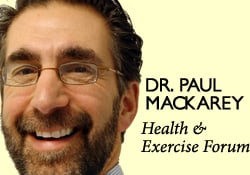 Guest Columnist: Anthony J. Yanni, MD, FACP, CPE
Guest Columnist: Anthony J. Yanni, MD, FACP, CPE
Part 1 of 2
At this time every year, patients come to our office with questions and concerns about the flu shot. In an attempt to educate the public and dispel any fears or misconceptions, I have taken this issue directly to the experts… the people who manufacture the vaccine at Sanofi Pasteur in Swiftwater, PA. Anthony Yanni, MD, Director of Clinical Development at Sanofi was kind enough to assist me with this column for your health and wellness.
Influenza has a long recorded history in medicine. It was first mentioned by Hippocrates in 412 BC. The first epidemic was reported in 1510 and the first pandemic in 1580. There have been 32 pandemics since 1580 with the most recent being in 2009 with the well known H1N1 virus. Influenza remains a serious illness with 40,000 deaths and 200,000 hospitalizations annually in the US. It’s estimated that between 5-20% of the US population will get Influenza each season with an estimated direct cost for care of 10 billion dollars.
Haemophilus Influenzae virus infects the respiratory epithelium or lining in the lungs. Onset of symptoms can be sudden with high fever, fatigue and muscle aches. Cough is usually present, is non-productive and can be severe. Symptoms can last for several days with fatigue lasting for 2-3 weeks. During the acute phase of illness, patients are at higher risk for secondary bacterial infections such as pneumonia.
Definitive diagnosis of influenza is made with a nasal swab and culture. The swab is obtained by placing a small probe into the nose and obtaining material from deep inside. This material is then sent to a lab and cultured in the hopes of identifying the causative agent.
There are effective antiviral medicines for the treatment of influenza. They are best used at first sign of disease and may shorten the period of illness or decrease disease severity. Other medical interventions are supportive. Treating any underlying symptoms such as muscle pain and promptly treating any complications such as bacterial pneumonia. Antivirals can also be used to prevent influenza and are used when exposure to someone with influenza is known and unavoidable such as in nursing home patients.
Influenza can strike any age group and both males and females are at risk. However, the elderly, the very young and those with underlying medical conditions are most at risk. Those over the age of 65, those with underlying lung disease, heart disease, diabetes, cancer, kidney disease or those with impaired immune function are at particularly high risk. Additionally, those in nursing homes and chronic care facilities are also at increased risk.
Vaccination is recommended for those 6 months and older. There are 2 main types of vaccines available: live attenuated (weakened) and inactivated. Because the live attenuated vaccine carries very small risks of disease in certain high risk groups (ie: impaired immune function), the live attenuated vaccine is only recommended for use in healthy adults under the age of 50. The inactivated vaccine can be administered to anyone without previous reaction or known allergy.
The effectiveness of the influenza vaccine depends on a few factors. One is the match of the vaccine to circulating strains in the community. When the strain predicted to be circulating and thus present in the vaccine is a good match, the vaccine can provide protection in greater than 75% of those who receive it. Another important factor in vaccine effectiveness is the individuals’ immune response. Those over the age of 65 have been shown to have a slightly lower immune response to the vaccine. It is a function of general immune responsiveness and not due to the vaccine itself. Clearly, however, those individuals who receive the vaccine are much more likely to be protected than those who remain unvaccinated.
Vaccine manufacturers continue to work on improving the influenza vaccine with the aim of providing broader coverage to a greater number of people. For example, there is a great deal of work being done on developing a Universal Flu Vaccine; one that identifies commonality among the many strains and will provide broader protection without the concern of strain match. A recently available high dose vaccine for those over the age of 65 was developed in the hope that a higher dose would provide those individuals in this age range a better and more consistent immune response than standard dose vaccine. Manufacturers are also looking to increase the virus types included in the annual vaccine from 3 to 4.
Visit your doctor regularly and listen to your body.
Guest Columnist: Anthony J. Yanni, MD, FACP, CPE, Director, Clinical Development Sanofi Pasteur, Swiftwater, PA.
NEXT MONDAY – Read Dr. Paul J. Mackarey “Health & Exercise Forum!” Next Week: The Flu – Part II
This article is not intended as a substitute for medical treatment. If you have questions related to your medical condition, please contact your family physician. For further inquires related to this topic email: drpmackarey@msn.com
Paul J. Mackarey PT, DHSc, OCS is a Doctor in Health Sciences specializing in orthopaedic and sports physical therapy. Dr. Mackarey is in private practice and is an affiliated faculty member at the University of Scranton, PT Dept